Height comparison: The Menin Gate 31m, Belfry-Cloth Hall 70m, Saint-James’ Church 75m, Saint-Martin’s Cathedral 102m and the industrial wind turbines 200m.
Note: The infographics (including city silhouette, floor plans, etc.) were drawn up cautiously for the most common industrial wind turbines (five with a tip height of 200 meters and three with a tip height of 230 meters) in the four permit applications.
City silhouette
In the illustration, you can see that the industrial wind turbines are twice as high as Saint-Martin’s Cathedral and almost three times as high as the Belfry-Cloth Hall. The length of a single blade of these industrial wind turbines is equal to the height of the Belfry-Cloth Hall.
Floor plans
The order of magnitude of the industrial wind turbines becomes abundantly clear when we project the floor plans of the industrial wind turbines and the Belfry-Cloth Hall side by side.
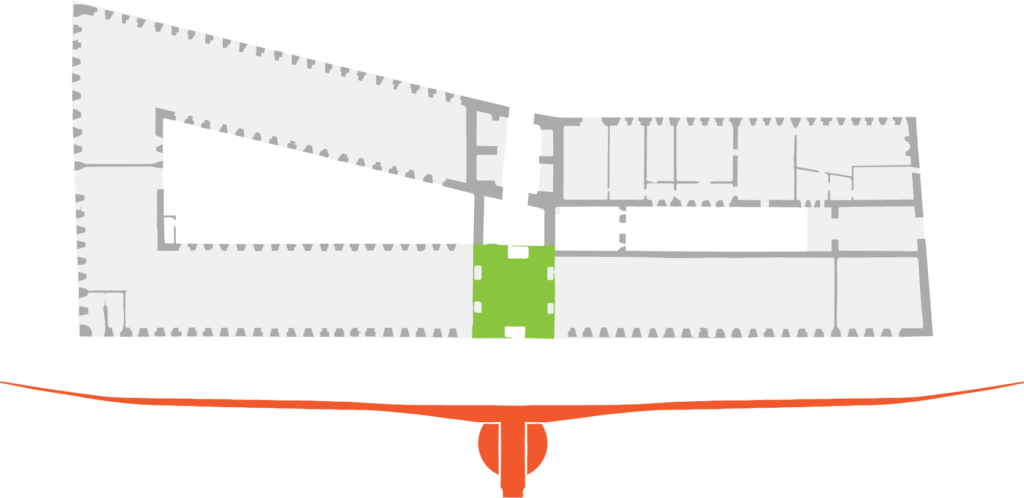
Floor plan dimensions: Industrial wind turbines (width in operation 150 meters, base of mast 9 meters, …) versus Belfry-Cloth Hall (width building facade 133 meters, base of tower 12 meters, …)
Cast shadow
The enormous structures, 200 meters high, cast shadows that reach into the center of Ypres
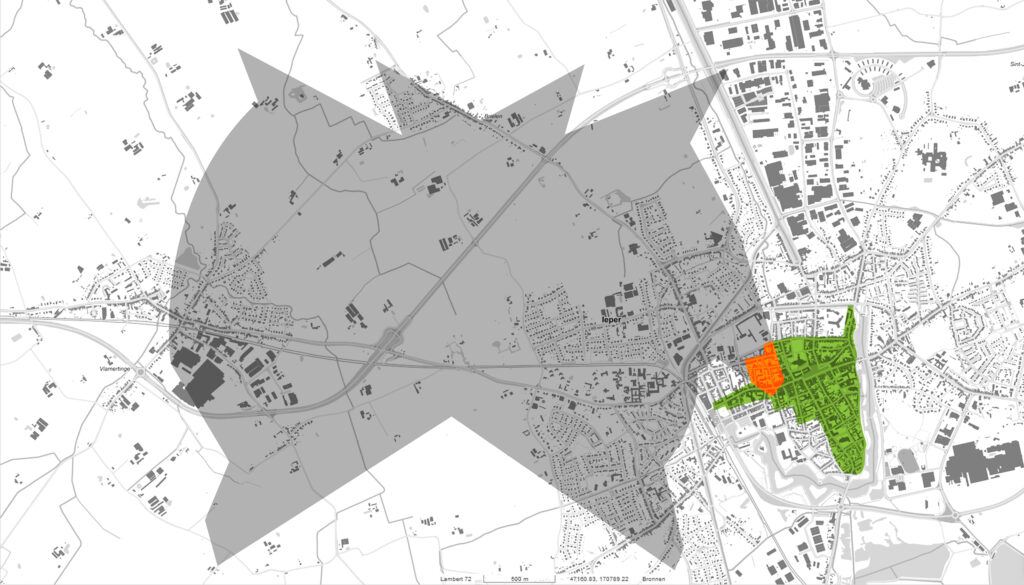
Landscape integration
The integration of industrial wind turbines of this size in the landscape is no longer possible. The scale of industrial wind turbines and other landscape elements diverges to such an extent that observers no longer perceive clear relationships between them.
The protected UNESCO zones, Ypres center and the Ypres Salient are not only experienced from within, but also from the view from afar. The industrial wind turbines will therefore be visible from various protected UNESCO viewing locations.
The harmony of the landscape is disturbed from the point of view of the historic city of Ypres over a viewing angle of approximately 120 degrees.
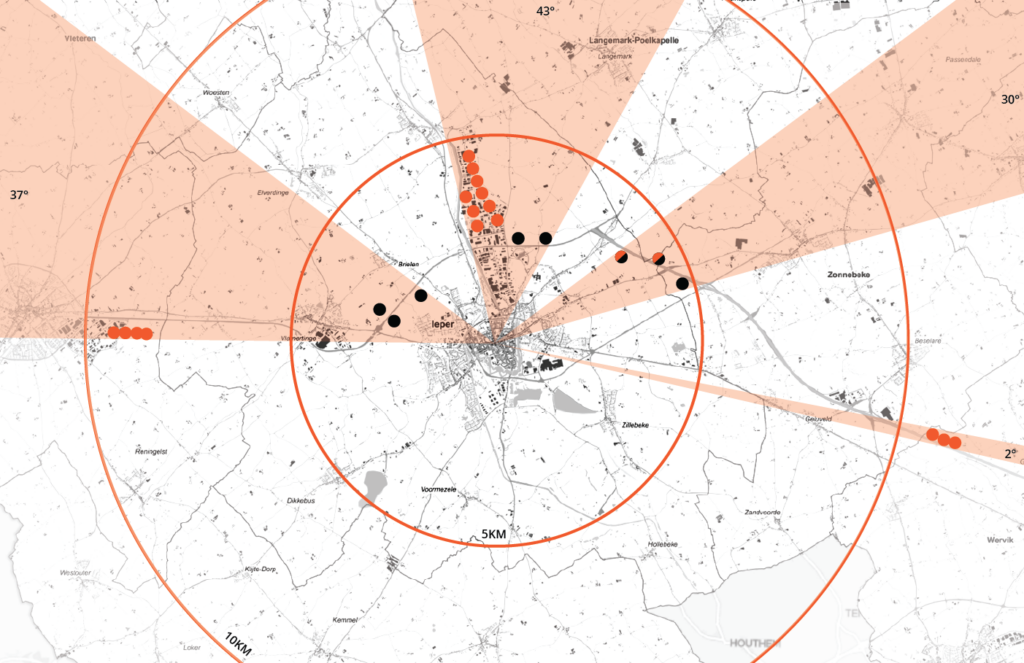
Dots are locations of wind turbines (red: operational, red-black: council of permit disputes, black: applied for) Red areas: disturbed viewing angles; Red circles: distances 5 km and 10 km.
The harmony of the landscape is disturbed from the vantage point of Tyne Cot Cemetery and Memorial of the Missing, the largest World War I Commonwealth cemetery on the mainland, over a viewing angle of approximately 45 degrees.

Dots are locations of wind turbines (red: operational, red-black: council of permit disputes, black: applied for)
Red areas: disturbed viewing angles; Red circles: distances 5 km and 10 km.
The harmony of the landscape will be disturbed from the viewpoint of Necropole nationale française St. Charles de Potyze, over a viewing angle of about 95 degrees.
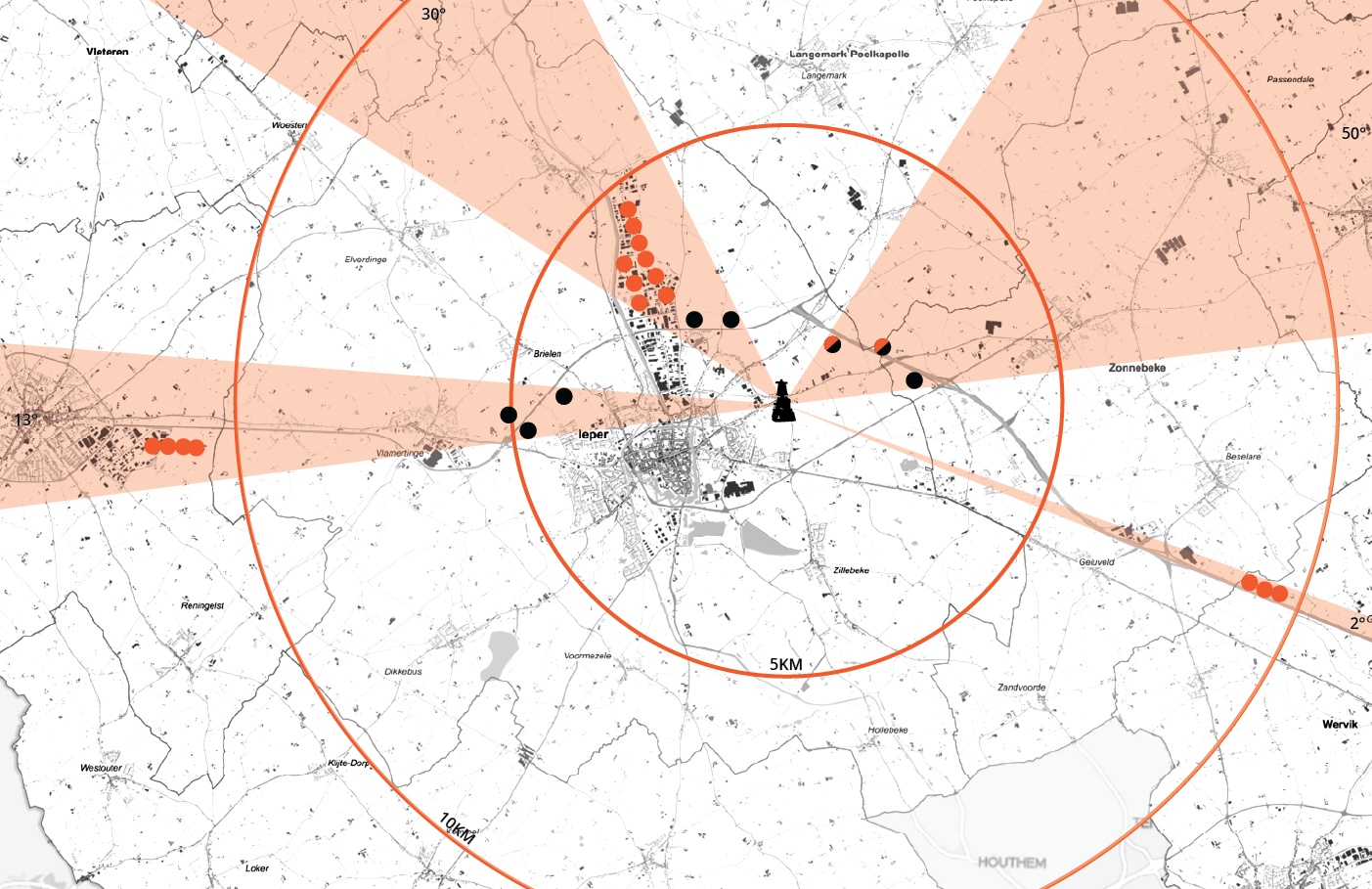
Dots are locations of wind turbines (red: operational, red-black: council of permit disputes, black: applied for)
Red areas: disturbed viewing angles; Red circles: distances 5 km and 10 km.
Monuments First World War
On September 20, 2023, the World Heritage Committee in Riyadh, Saudi Arabia, inscribed 139 (*) burial and memorial sites from the First World War on the UNESCO World Heritage List. These memorial sites, of which 27 are located in Flanders, are witnesses to the Western Front in France, Flanders and Wallonia.
The memorial sites in the series have been carefully selected to pay tribute to the victims of this conflict, who came from 130 countries today.
Powerful symbols of reconciliation and equality, they honor every allied or enemy soldier without distinction of geographical or social origin. The global dimension of this nomination and the universal message of peace are strikingly relevant in the light of international news.
(*) Of the 139 sites, 96 are located in France, 27 in Flanders and 16 in Wallonia.
Becoming World Heritage is not easy!
Belgium counts in total only 16 inscriptions on the World Heritage List , including the Belfries and the burial and memorial sites from the First World War.
Only UNESCO can designate heritage as World Heritage. It is not an election but a lengthy process. People from different countries decide together what is added to the World Heritage List.
Being designated as UNESCO World Heritage is a source of pride. Being placed on the “World Heritage in Danger” list or being delisted by UNESCO would be detrimental to the credibility of Flanders, West Flanders, the Westhoek, and Ypres.
The impact of industrial wind turbines on the outstanding universal value of the UNESCO World Heritage was not assessed against the UNESCO recommendations (and associated checklists) for wind energy projects in a World Heritage context.
The overview map below illustrates the great risk that the outstanding universal value of the UNESCO world heritage will be damaged because the locations of the various industrial wind turbines and the various UNESCO protected zones are located too close to each other.
Hopefully, policymakers will consult with UNESCO beforehand, adopt UNESCO’s recommendations and make the right decisions in good time.
It would be a miscalculation to think that deletion from the UNESCO World Heritage List is impossible. It’s worth remembering that Dresden lost its World Heritage status without much ado after failing to take a UNESCO recommendation seriously. Riga narrowly escaped the same fate.
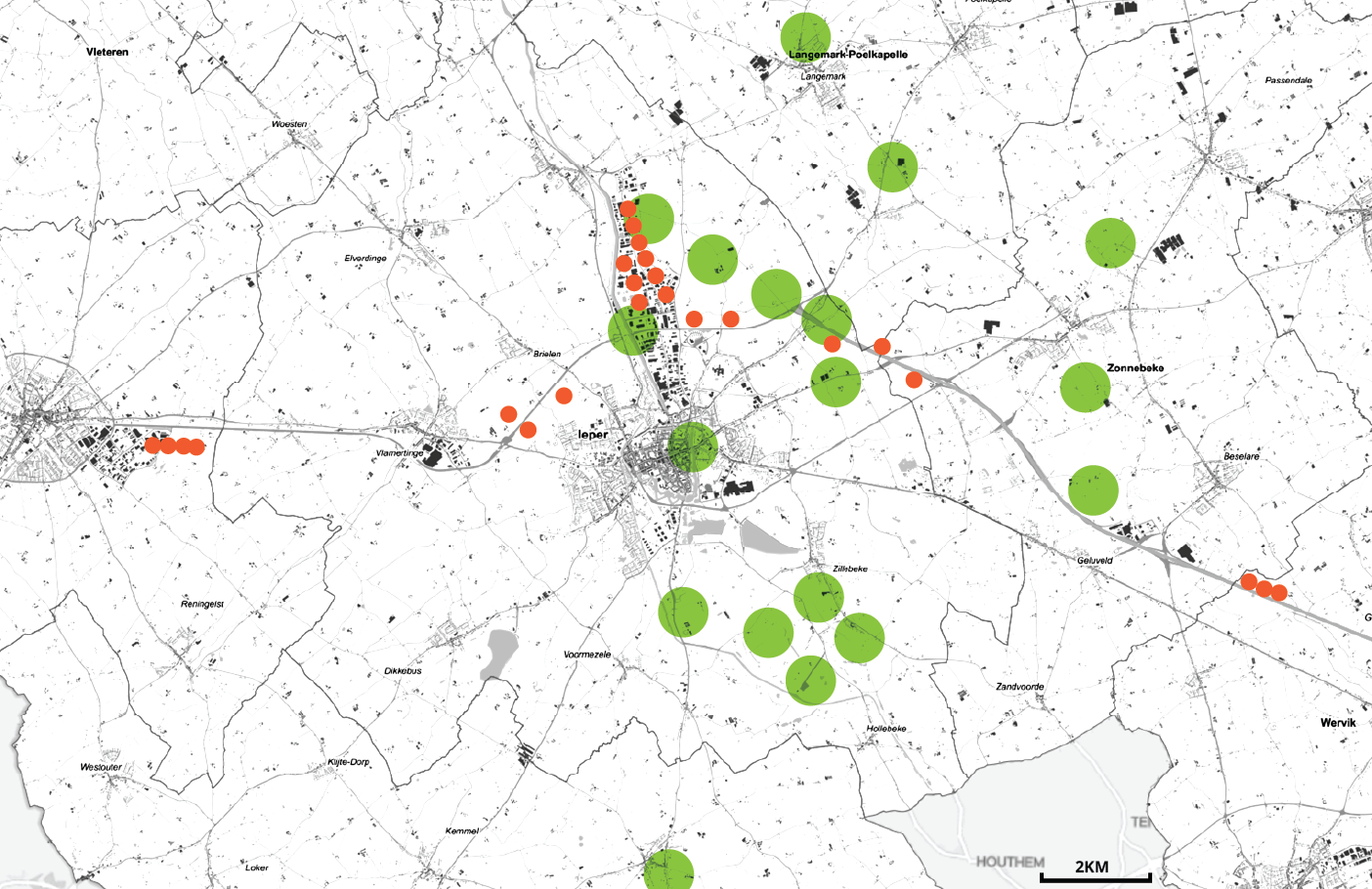
Red dots: locations of wind turbines. Green dots: UNESCO world heritage sites (source: Westhoek tourism).
Real estate damage
in Ypres
European studies show that industrial wind turbines with a tip height of 200 meters can significantly reduce house prices.
The fall in value of the houses increases as the distance to the industrial wind turbines decreases and fades out approximately 8 to 9 kilometers away.
the Ypres salient
© de ieperboog 2023 – All rights reserved
